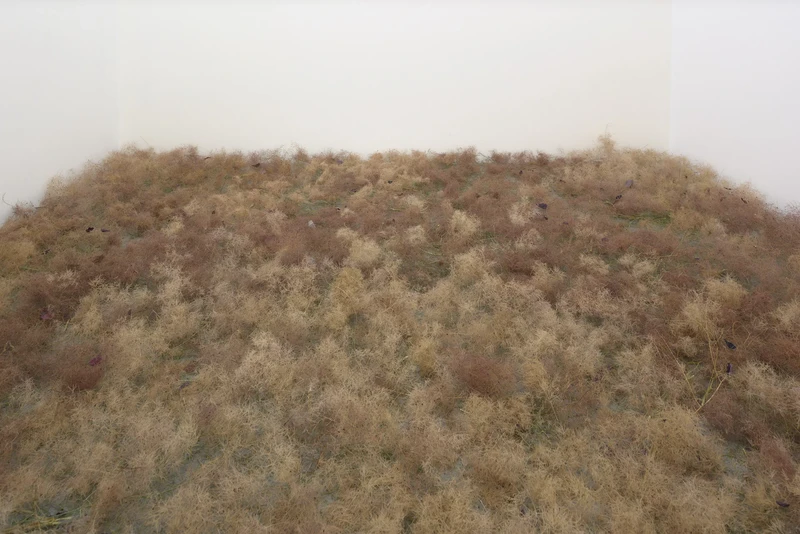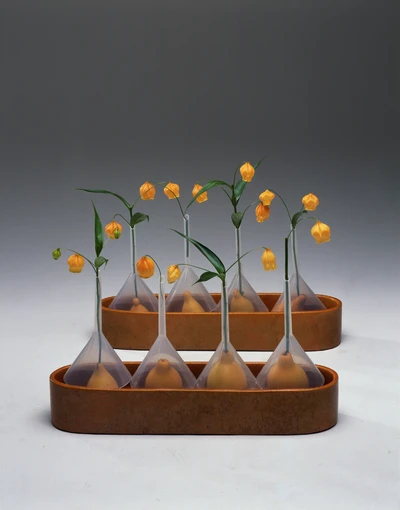Kunstverein München e.V.
Galeriestr. 4
80539 Munich
Deutschland
Flower Planet: Kosen Ohtsubo & Christian Kōun Alborz Oldham
The artists Kosen Ohtsubo and Christian Kōun Alborz Oldham share an unusual approach to ikebana and an interest in how one person enables the work of the other. Working with living material, the practices confront us with questions of being in and with this world, processes of decay, transient beauty, and the elusive nature of human control.
With Flower Planet, Kunstverein München presents two artists in ongoing dialog with each other that create fragile sculptures that challenge us to see the earth as a living entity and not as territory to be owned. This understanding of ecology and conceptual art practice is an urgent component in the current state of our (surrounding) world.
The Japanese artist Kosen Ohtsubo is one of the most important practitioners and teachers of the art form of ikebana. Traditionally, the ikebana arrangement is intended to bring nature into the human habitat through precious plants, arranged in such a way to represent the cosmic order. In the 1970s, however, Ohtsubo became well-known for his use of everyday materials such as vegetables and waste. His works give a subversive and completely surprising form to the elegant materials that have, for centuries, made up the art form of ikebana. “I want to explode the idea of beautiful ikebana,” says Ohtsubo, who utilizes traditional botanical materials that take unexpected detours, resulting in bathtubs becoming vessels for bodies and flowers, entire junkyards becoming entangled in sprawling arrangements, or fashioning elaborate torture devices that split trees in half.
Christian Kōun Alborz Oldham is concerned with the relationships inscribed in the production and life of things. They understand ikebana and working with living matter as acts of negotiation. A negotiation of time, space, material, of human interrelations. Ikebana—for them—is also an almost-performative display of the illusion of control. In 2013, Oldham first saw Ohtsubo’s work in a book and contacted him. What followed were years of correspondence and training with Ohtsubo in Japan in an intensive teacher-student relationship. Parallel to their training as an ikebana master, Oldham began archiving the majority of Ohtsubo’s extensive photo archive from the last fifty years and giving lectures on the development and teaching of the practice. This was followed by exhibitions of photographs of Ohtsubo’s work in Seattle, New York, and Los Angeles. These acts of mediation and concern for the visibility of Ohtsubo’s practice became a medium for Oldham to negotiate questions of collective authorship and appropriation, (il)legibility, and acts of advocacy.

